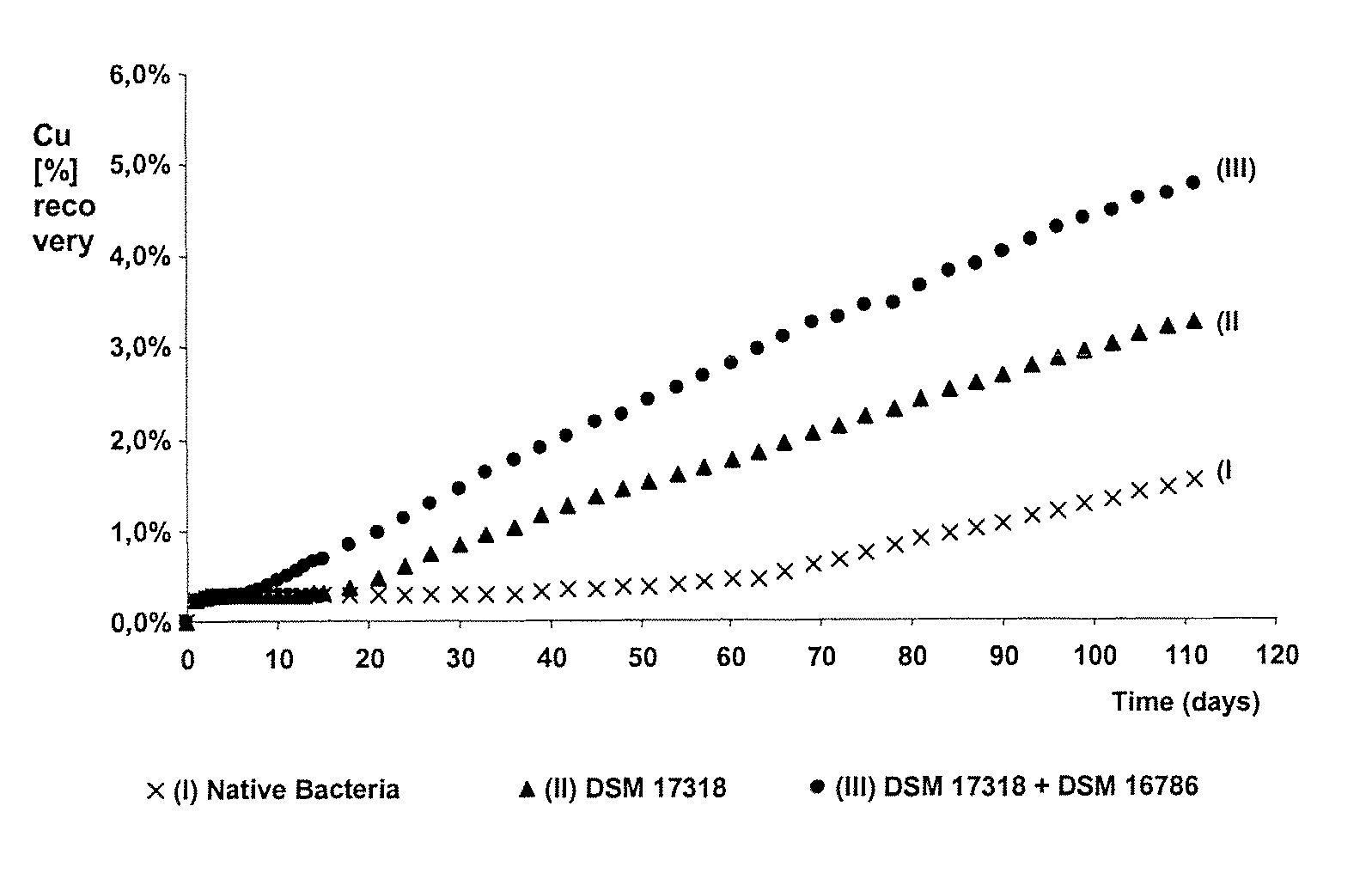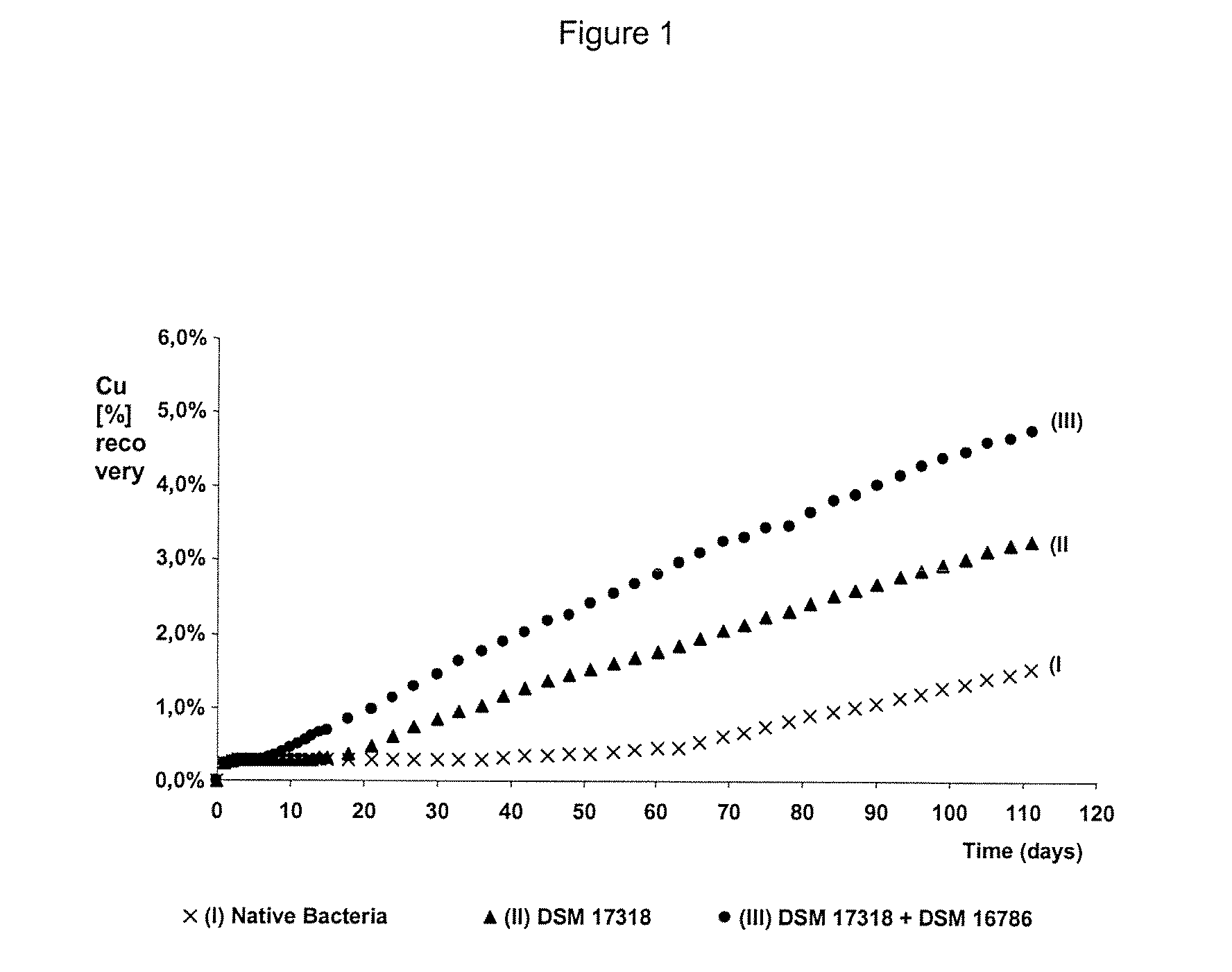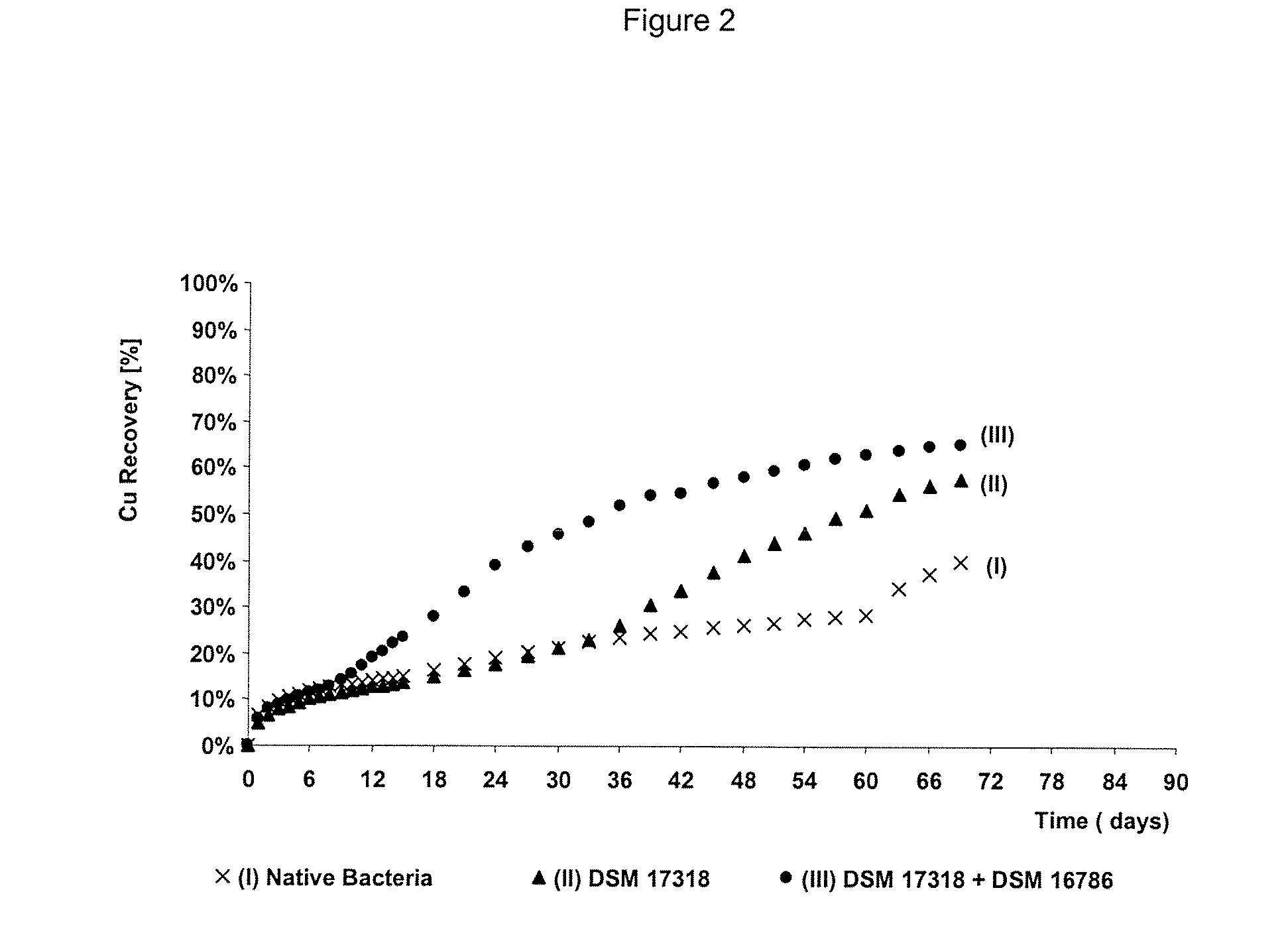Process to increase the bioleaching speed of ores or concentrates of sulfide metal species, by means of continuous inoculation with leaching solution that contains isolated microorganisms, with or without presence of native microorganisms
a technology bioleaching conditions, applied in the direction of silver compounds, blast furnace components, fluid removal, etc., can solve the problems of infrastructural viability and limited application of this technology to oxide ore, and achieve the effects of improving the bioleaching conditions of sulfide metal ores, reducing ore bioleaching times, and improving bacterial activity
- Summary
- Abstract
- Description
- Claims
- Application Information
AI Technical Summary
Benefits of technology
Problems solved by technology
Method used
Image
Examples
example 1
[0053]In order to compare the bioleaching activity of native bacteria, without inoculation of microorganisms, with the continuous inoculation of an Acidithiobacillus thiooxidans microorganism type, represented here by Licanantay DSM 17318, and with continuous inoculation of the association formed by Wenelen DSM 16786 (Acidithiobacillus ferrooxidans) and Licanantay DSM 17318, a sample of primary ore from the Codelco—Chile El Teniente Mine was used, composed mainly by chalcopyrite (96.6%). The ore sample was bioleached in mini-columns in order to simulate industrial processing conditions in heap or dump leaching. The experiment was carried out according to the following protocol:
[0054]1. Columns were manufactured from vinyl polychloride tubes with an internal diameter of approximately 40 mm, filled with ore packed to a height of 20 cm, furnished with a lower perforated plate containing a 2 cm high bed of quartz sand to sustain the ore.
[0055]2. The columns were packed with 225 grams of...
example 2
[0066]In order to verify the effects indicated in the previous example in the case of secondary copper ore, the same protocol described in Example 1 was used, this time on a copper ore composed mainly of copper sulfide species of a secondary type, from the Codelco—Chile Radomiro Tomic Mine. The continuously inoculated bacteria were microorganisms of an Acidithiobacillus thiooxidans type, represented here by Licanantay DSM 17318, and with the continuous inoculation of the association formed by Wenelen DSM 16786 and Licanantay DSM 17318. The leaching solutions contain an average concentration of total iron of 0.17 g / l as Fe(III).
[0067]The characteristics of the ore used for this example are presented in Table 2 below:
[0068]
TABLE 2Mineralogical composition of the ore used in the Example 2 columnsSpecies% CuChalcosite63.7Digenite26.8Covellite1.9Bornite2.5Chalcopyrite0.1Enargite0.0Oxidized5.0
[0069]Regarding the results, as observed in FIG. 2, the column which is not inoculated with bacte...
example 3
[0072]With the purpose of verifying the effects indicated in the previous examples in the case of different concentrations of ferric ions, especially in the first stages of a process, the same protocol described in Example 1 was used, this time on a mixed sulfide copper ore from the Codelco—Chile Radomiro Tomic Mine (40.8% of total copper as Chalcopyrite). The continuously inoculated bacteria were microorganisms of the Acidithiobacillus thiooxidans type, represented here by Licanantay DSM 17318, and with the continuous inoculation of the association composed by Wenelen DSM 16786 and Licanantay DSM 17318.
[0073]The characteristics of the ore used in this example are presented in Table 3 below:
[0074]
TABLE 3Mineralogical composition of the ore used in the Example 3 columns% In Weight Sulphide Based Base OreOre%Chalcopyrite0.89Chalcosite0.23Covellite0.06Bornite0.30Molybdenite0.04Pyrite1.13Oxides + Gangue97.00Total100.00
[0075]Regarding the results, as observed in FIG. 3, the column in whi...
PUM
| Property | Measurement | Unit |
|---|---|---|
| concentration | aaaaa | aaaaa |
| concentrations | aaaaa | aaaaa |
| concentration | aaaaa | aaaaa |
Abstract
Description
Claims
Application Information
 Login to View More
Login to View More - R&D
- Intellectual Property
- Life Sciences
- Materials
- Tech Scout
- Unparalleled Data Quality
- Higher Quality Content
- 60% Fewer Hallucinations
Browse by: Latest US Patents, China's latest patents, Technical Efficacy Thesaurus, Application Domain, Technology Topic, Popular Technical Reports.
© 2025 PatSnap. All rights reserved.Legal|Privacy policy|Modern Slavery Act Transparency Statement|Sitemap|About US| Contact US: help@patsnap.com



